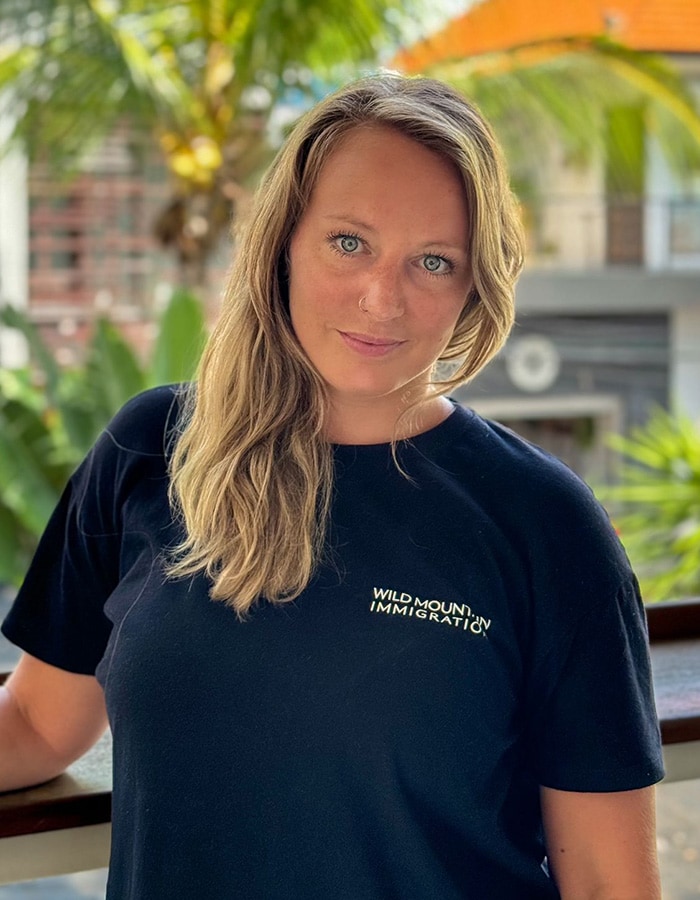For many Canadians, the desire to bring a loved one to Canada is a top priority. However, Canada’s immigration laws do not offer a direct sponsorship option for boyfriends or girlfriends. If you’re hoping to sponsor your boyfriend for Canadian permanent residence, you may still have options—but they depend on your relationship’s specific circumstances. Canadian immigration recognizes certain relationship categories—like spouse, common-law partner, and conjugal partner—within its family sponsorship program. Each category has its own eligibility requirements, and understanding them is crucial if you’re aiming for Canada PR sponsorship for your boyfriend.
In this guide, we’ll walk you through each Canada spouse visa option available for committed relationships, including common-law partner sponsorship, conjugal partner sponsorship, and spousal sponsorships. We’ll explain the eligibility criteria, documentation requirements, and the steps to apply for Canada PR for a spouse or partner. If you find that sponsorship is not immediately possible, there are also alternative options, like temporary visas and visitor visas, that may allow your boyfriend to come to Canada for shorter periods while you plan for a more permanent solution.
By understanding these pathways, you’ll be better prepared to bring your boyfriend to Canada, either temporarily or as a future permanent resident spouse. This guide aims to provide the insights you need to make informed decisions about your relationship and your future together in Canada.

Canadian Immigration Consultant
Let our expert team of Canadian immigration consultants guide you through the complexities of Canada’s immigration process. We provide personalized, step-by-step support to ensure a smooth and successful journey to your new life in Canada.
Sponsorship Options for Bringing Your Boyfriend to Canada
If you’re asking, “Can I sponsor my boyfriend to Canada?” it’s important to understand the Canadian immigration categories that may apply. Unlike a spouse visa or Canada PR sponsorship for a legally married couple, Canada doesn’t offer direct sponsorship for boyfriends or girlfriends. However, you may be able to sponsor your boyfriend under one of the following recognized relationship categories:
Common-Law Partner Sponsorship
Eligibility: To sponsor your boyfriend as a common-law partner, you must have lived together continuously in a marriage-like relationship for at least 12 consecutive months. This shared residence demonstrates that your relationship has the same level of commitment as a marriage.
Required Documentation: Evidence of cohabitation, such as joint leases, shared financial responsibilities, and proof of your relationship spanning a full year.
Benefits: If approved, your boyfriend would gain Canadian permanent residence, allowing him to live, work, and study in Canada. This pathway provides similar benefits to those in spousal sponsorship.
Conjugal Partner Sponsorship
Eligibility: The conjugal partner category applies to couples who have been in a committed relationship for at least one year but cannot live together or marry due to significant barriers. These barriers could include immigration restrictions, legal obstacles, or cultural prohibitions in either partner’s home country.
Documentation Needed: You’ll need to provide proof of your relationship and the barriers preventing cohabitation or marriage. This might include communication records, evidence of visits, financial support, and documentation explaining why living together is not possible.
Advantages: Conjugal partner sponsorship can lead to permanent residence in Canada under the Canada family sponsorship program, offering similar rights as those given to a spouse of a permanent resident.
Spousal Sponsorship
Eligibility: If you and your boyfriend are legally married, he qualifies for sponsorship as a spouse. The marriage must be legally valid in the country where it took place and recognized by Canadian law. Canadian immigration accepts both same-sex and opposite-sex marriages.
Requirements: Proof of your marriage, along with supporting evidence of your relationship’s authenticity, will strengthen your application. This may include a marriage certificate, photos, shared finances, and additional documentation.
Benefits of Spousal Sponsorship: Once approved, a Canada permanent resident spouse enjoys full residency rights, including the ability to work and access healthcare in Canada as a Canadian PR.
These sponsorship options provide potential pathways for your boyfriend to gain Canadian PR if your relationship qualifies. If none of these categories apply, there are still alternative temporary visa options you may consider, which we’ll explore in the next section.
Alternative Pathways if You Can’t Sponsor Your Boyfriend to Canada Directly
If you find that your relationship doesn’t qualify under common-law, conjugal, or spousal sponsorship, there are still alternative options for bringing your boyfriend to Canada. While these pathways don’t provide permanent residence right away, they allow your boyfriend to stay in Canada temporarily. Here’s a look at the main options:
Visitor Visa
A visitor visa (often referred to as a Temporary Resident Visa or TRV) allows your boyfriend to visit and stay in Canada for up to six months. This visa can be renewed or extended from within Canada in some cases, although it’s essential to show that he intends to return to his home country after his stay. Keep in mind that a visitor visa doesn’t permit your boyfriend to work in Canada.
Eligibility and Requirements: He’ll need to show strong ties to his home country (such as employment, property, or family) and demonstrate that he can financially support himself during his visit.
Visa-Exempt Countries: If your boyfriend is from a visa-exempt country, he won’t need a visitor visa but will need an Electronic Travel Authorization (eTA) if arriving by air. However, this still only allows temporary entry without work authorization.
Work Permit
A work permit may be an option if your boyfriend has a job offer from a Canadian employer or qualifies for specific work programs. Programs like International Experience Canada (IEC) allow citizens of certain countries to apply for temporary work permits, which provide an opportunity to live and work in Canada.
Eligibility for Specific Programs: Eligibility for a work permit depends on several factors, including his country of citizenship, professional qualifications, and, in some cases, the labor market needs of Canada. Work permits are generally employer-specific unless he qualifies for an open work permit.
Advantages: A work permit allows your boyfriend to work legally in Canada and can often be a stepping stone toward Canadian permanent residence through programs like Canadian Experience Class (CEC) if he gains enough Canadian work experience.
Study Permit
If your boyfriend wants to pursue studies in Canada, a study permit is a viable option. With a study permit, he can enroll in a recognized educational program in Canada and, in most cases, work part-time during his studies. Studying in Canada also provides pathways to Canadian PR, such as through the Post-Graduation Work Permit (PGWP) program, which can lead to permanent residency after gaining Canadian work experience.
Requirements: He must have an acceptance letter from a Designated Learning Institution (DLI) in Canada, demonstrate sufficient funds to support himself during his studies, and show an intention to return to his home country after the program.
Advantages: A study permit not only allows him to study and work part-time in Canada but also provides potential PR pathways through work permits and Canadian experience programs after graduation.
Fiancé Visa Options
Although Canada doesn’t offer a specific fiancé visa, the options above allow for temporary residence while you build a stronger case for family sponsorship down the line. If you’re wondering, ‘Can I sponsor my boyfriend to Canada?’, the answer lies in exploring these pathways. If you plan to marry in Canada, your boyfriend may later qualify for spousal sponsorship if you legally register the marriage and meet all eligibility requirements.
Each of these alternative options enables you to be together in Canada temporarily while planning for a long-term solution, like permanent residency through the Canada spouse visa program. In the next section, we’ll cover the steps to apply for sponsorship, including the required documents and application process.
Demonstrating the Genuineness of Your Relationship to Sponsor Your Boyfriend
For any family sponsorship category—whether common-law, conjugal, or spousal—Canadian immigration requires proof that your relationship is genuine and ongoing. This evidence is crucial to address the question ‘Can I sponsor my boyfriend to Canada?’ and to avoid any doubts about your intentions. Demonstrating that your relationship meets the requirements of a Canada spouse visa or Canadian permanent resident spouse sponsorship is essential. Here’s what you need to know about preparing a strong application.
Required Documentation for Relationship Proof
To support your application, you’ll need to provide several types of documentation that showcase the depth and authenticity of your relationship. While specific requirements may vary depending on whether you’re applying as a common-law, conjugal, or spousal sponsor, the following types of evidence are generally helpful:
- Proof of Cohabitation: If you’re applying under the common-law category, provide evidence of living together, such as joint leases, utility bills, or mail showing the same address.
- Shared Finances and Assets: Joint bank accounts, shared credit cards, insurance policies, or ownership documents (e.g., a home or car) help demonstrate financial interdependence.
- Communication Records: Save copies of messages, emails, and call logs to show regular communication, especially if you’ve lived separately. Immigration officers want to see that you maintain regular contact despite any physical distance.
- Travel and Visit History: Photos, travel tickets, hotel receipts, or itineraries from visits to each other’s country add credibility to your relationship history.
- Photos Together: Photos of you as a couple at family events, holidays, and gatherings with friends can add personal context and show your relationship’s social integration.
Tips for a Strong Application
- Be Consistent and Detailed: Ensure all documents are clear, complete, and consistent across your application. Any gaps or discrepancies can raise questions.
- Provide Translations if Necessary: If any documents are not in English or French, they must be translated by a certified translator to avoid processing delays.
- Organize Your Documents Logically: Submit your evidence in a logical, organized manner. Group similar documents together and label them clearly to help immigration officers easily verify your relationship.
Common Mistakes to Avoid
- Insufficient Documentation: Not providing enough evidence can lead to doubts about the authenticity of your relationship.
- Missing Translations: Any foreign-language documents without certified translations may result in delays or refusals.
- Overly Selective Evidence: Avoid submitting only a few select types of evidence. Instead, provide a well-rounded picture of your relationship through various types of documentation.
The Role of an Interview
In some cases, an interview may be requested to verify your relationship’s authenticity. During this interview, be prepared to answer questions about your relationship history, daily life as a couple, future plans, and family involvement. If both you and your boyfriend are well-prepared, this is an excellent opportunity to demonstrate the genuineness of your bond.
By submitting comprehensive evidence and following these guidelines, you’ll increase your chances of approval for Canada PR sponsorship or another suitable pathway. Next, we’ll look at the step-by-step process for submitting a sponsorship application to Canada.

How to Apply to Sponsor Your Boyfriend to Canada
If your relationship qualifies under one of Canada’s family sponsorship categories—such as common-law, conjugal, or spousal sponsorship—and you’re wondering, ‘Can I sponsor my boyfriend to Canada?’, you can begin the process to apply for Canada PR sponsorship for him. Here’s a step-by-step guide to help you navigate the application process for permanent residency in Canada.
Step 1: Determine Your Sponsorship Category
First, confirm which sponsorship category is the best fit for your relationship:
- Common-Law Partner: If you have lived together for at least 12 consecutive months.
- Conjugal Partner: If you have been in a committed relationship for at least a year but cannot live together due to significant barriers.
- Spouse: If you are legally married to your boyfriend.
Understanding the requirements of each category will guide you in gathering the correct documentation and determining eligibility.
Step 2: Obtain and Complete the Required Forms
Gather the appropriate forms from the Immigration, Refugees and Citizenship Canada (IRCC) website. You’ll need both sponsorship forms and forms for your boyfriend’s Canada PR application. Common forms include:
- IMM 1344: Application to Sponsor, Sponsorship Agreement, and Undertaking
- IMM 5481: Sponsorship Evaluation Form
- IMM 0008: Generic Application Form for Canada
- IMM 5669: Schedule A – Background/Declaration
Complete these forms carefully, ensuring all details are accurate and up-to-date. Mistakes or incomplete forms can delay processing.
Step 3: Gather Supporting Documents
As part of the application, you’ll need to provide various documents that confirm your relationship and your boyfriend’s eligibility for sponsorship. Common documents include:
- Proof of Relationship: Include communication records, shared finances, travel history, and photos together.
- Proof of Financial Stability: Demonstrate your ability to support your boyfriend financially, as he should not require social assistance after arrival.
- Identity Documents: Valid passport copies, birth certificates, and any legal name change documents.
- Additional Documentation for Conjugal or Common-Law Sponsorships: Evidence of barriers to living together (for conjugal partners) or proof of cohabitation (for common-law partners).
Step 4: Pay the Sponsorship Fees
To submit your application, you’ll need to pay the required fees on the IRCC website. Typical fees include:
- Sponsorship Fee: Covers the processing of your sponsorship application.
- Right of Permanent Residence Fee: This fee is typically paid with the initial application but can be deferred until later in the process.
Once the payment is made, save and print your payment receipt. This receipt must be included with your application as proof of payment.
Step 5: Submit Your Application Online
With the forms, documentation, and payment receipt ready, submit your application through the IRCC online portal. Ensure you upload each document to the correct section and follow all instructions provided. Submitting a complete and well-organized application package can reduce processing time and help ensure a smooth review process.
Step 6: Complete Biometrics and Medical Exams
If requested, your boyfriend will need to complete a biometric appointment (fingerprints and photograph) and a medical exam. These are standard requirements for most Canada PR sponsorship applications:
- Biometric Appointment: Your boyfriend will need to schedule an appointment at an authorized biometric collection center.
- Medical Exam: He’ll need to undergo an immigration medical exam conducted by a panel physician approved by IRCC.
These steps are crucial for determining admissibility to Canada and should be completed promptly after receiving the request.
Step 7: Track Your Application and Respond to Additional Requests
After submission, you can track the status of your application through the IRCC portal. Sometimes, IRCC may request additional documents or clarification. Be prompt in responding to these requests to avoid delays in the processing of your application.
- Potential Interview: In some cases, IRCC may request an interview to confirm the authenticity of your relationship. Be prepared to discuss your relationship’s history and future plans together.
Following these steps carefully will give you the best chance of success when sponsoring your boyfriend for Canadian permanent residency. In the next section, we’ll discuss what to expect after applying, including processing times and potential outcomes.
What to Expect After Submitting Your Sponsorship Application
After submitting your sponsorship application for Canada PR for your boyfriend, if you’ve asked yourself, ‘Can I sponsor my boyfriend to Canada?’, there are several steps in the process where IRCC will review your application, assess eligibility, and issue decisions. Here’s a guide on what to expect once your application is in progress.
Processing Times
Processing times for spousal sponsorship and family sponsorship applications can vary. Generally, it takes several months for IRCC to complete all necessary checks, including background, medical, and relationship assessments. Factors affecting processing time include:
- Completeness of Application: Applications that are fully completed with all supporting documents can move more quickly.
- Country of Origin: Processing times can vary based on the applicant’s country of residence.
- Additional Requests or Interviews: If additional information is needed or an interview is requested, processing may take longer.
You can check the current processing times on the IRCC website to get an estimate based on recent trends.
Possible Application Outcomes
Once your application is reviewed, IRCC will notify you of the outcome. Here are the possible scenarios:
- Approval: If the sponsorship is approved, your boyfriend will be granted Canadian permanent residency. He’ll receive a Confirmation of Permanent Residence (COPR) document, which he’ll need when entering Canada as a permanent resident.
- Request for Additional Information: In some cases, IRCC may need more information or documentation to finalize the decision. Be prepared to provide any requested information promptly to avoid delays.
- Interview: IRCC may require an interview to further assess the relationship’s authenticity. This is usually a routine process for certain applications and offers you an opportunity to clarify any questions IRCC may have about your relationship.
- Denial: If the application is denied, IRCC will provide reasons for the refusal. Common reasons include insufficient documentation of the relationship or failure to meet the eligibility criteria. If your application is denied, you may have the option to appeal the decision to the Immigration Appeal Division (IAD).
Arriving in Canada as a Permanent Resident
Once approved, your boyfriend can enter Canada as a permanent resident spouse or partner. Here’s what to prepare for upon arrival:
- Confirmation of Permanent Residence (COPR): Your boyfriend must bring his COPR document when traveling to Canada. This document serves as proof of his permanent residency status.
- Permanent Resident Card: Upon arrival, IRCC will initiate the process for his permanent resident (PR) card. This card is essential for re-entry if he travels outside Canada and serves as official proof of his PR status within Canada.
- Access to Rights and Services: As a permanent resident spouse or partner, your boyfriend will have access to Canadian healthcare, education, and the right to work anywhere in Canada. If you’ve applied for spousal sponsorship, this approval will also allow him to access any benefits applicable to Canada family sponsorship recipients.
Preparing for Life in Canada Together
Securing permanent residency is a significant milestone, but preparing for life in Canada is equally important. Consider exploring resources for newcomers to help him integrate smoothly, such as:
- Employment Resources: Assistance with resume building, job search platforms, and language programs.
- Healthcare Registration: Guide him through enrolling in the provincial healthcare system.
- Community and Social Services: Many communities offer support programs for new residents, which can be beneficial as he adjusts to life in Canada.
Completing the sponsorship journey is the first step in building a life together in Canada. By understanding the post-application process, you’ll be better prepared for a smooth transition after Canada PR sponsorship approval.

Conclusion
Sponsoring your boyfriend to Canada requires thorough preparation, from understanding which family sponsorship category fits your relationship to gathering essential documentation and navigating the IRCC’s processing steps. Whether you’re applying under common-law partner, conjugal partner, or spousal sponsorship, each pathway offers an opportunity for you to build your life together in Canada.
If your relationship doesn’t currently qualify for Canada PR sponsorship but you’re committed to finding a way, options like a visitor visa, study permit, or work permit can bring you closer in the short term while you prepare for a long-term sponsorship plan. The immigration process may be complex, but with patience and the right approach, it’s possible to achieve your goal of reuniting with your loved one in Canada.
For expert guidance through every step of your sponsorship journey, Wild Mountain Immigration can help. Our team provides specialized support for spousal sponsorships, Canada family sponsorships, and other pathways to permanent residency. Contact us today to discuss your situation and find the best approach to bring your boyfriend to Canada.
How We Can Help
At Wild Mountain Immigration, our experienced team of certified Canadian immigration consultants is here to help you navigate the complexities of the immigration system. Whether you’re applying for permanent residency, a work permit, or dealing with a complex immigration case, we provide personalized support tailored to your needs.
Contact us today to learn how we can help you achieve your Canadian immigration goals.
FAQs
You can bring your boyfriend to Canada if he qualifies under one of the family sponsorship categories, such as common-law partner or conjugal partner sponsorship. However, there is no direct sponsorship pathway specifically for a boyfriend or girlfriend. If you haven’t lived together for at least 12 consecutive months (common-law) or can’t demonstrate significant barriers to cohabitation (conjugal), he may be able to apply for a visitor visa, work permit, or study permit to stay temporarily in Canada.
Yes, you can invite your boyfriend to visit Canada on a visitor visa. He will need to apply for this visa, demonstrating strong ties to his home country and sufficient financial means to support himself during his stay. If he’s from a visa-exempt country, he may be eligible for an Electronic Travel Authorization (eTA) instead.
You may be able to sponsor your long-distance boyfriend if your relationship meets the conjugal partner requirements. This category is for couples who have been in a committed relationship for at least one year but cannot live together due to significant barriers such as legal, cultural, or immigration restrictions. You’ll need to provide evidence of these barriers and the authenticity of your relationship. Otherwise, he may consider temporary visa options while you work toward a sponsorship route.
For spousal or partner sponsorships, there is generally no minimum income requirement unless the person you are sponsoring has a dependent child with their own dependent. However, you must demonstrate that you can financially support your partner and that they won’t require social assistance. For sponsorship involving dependent children or other family members, Minimum Necessary Income (MNI) thresholds do apply.
Yes, but only if your relationship qualifies under one of the recognized categories—common-law partner, conjugal partner, or spousal sponsorship. If you’ve lived together for at least 12 months, you may qualify for common-law sponsorship. If you’re in a committed relationship but cannot cohabit due to significant barriers, you may be eligible under the conjugal partner category. Otherwise, there is no direct pathway for sponsoring a boyfriend or girlfriend.
If you want to move to Canada to be with your boyfriend, you have several options, such as applying for a visitor visa, study permit, or work permit. If you eventually qualify as a common-law partner or spouse, you can apply for Canada PR sponsorship. Additionally, if you gain Canadian work experience or complete education in Canada, you may qualify for permanent residency through other programs, such as the Canadian Experience Class.
Processing times for spousal and partner sponsorship applications can vary but generally range from 12 to 24 months, depending on the country of origin, application completeness, and any additional requests from IRCC. You can check IRCC’s website for current processing times.
Yes, an unmarried couple can move to Canada, but one partner typically needs to qualify for a work permit, study permit, or visitor visa to live in Canada temporarily. For permanent residency sponsorship, the relationship must qualify under the common-law or conjugal categories. For a common-law partnership, you must have lived together continuously for at least 12 months; for a conjugal partnership, you’ll need to demonstrate why living together or marrying hasn’t been possible due to significant barriers.
Canadian Immigration FAQs
Find quick answers to the most common questions about Canadian immigration, visas, and permanent residency.
LMIA Costs Explained: How Much Does LMIA Cost in 2024?
For Canadian employers seeking to hire foreign workers, a Labour Market…
Can I Leave Canada After Applying for Spousal Sponsorship?
When applying for spousal sponsorship in Canada, many applicants wonder,…
Who Can Apply for BOWP (Bridging Open Work Permit) in Canada?
If you’re transitioning from temporary status to permanent residence in…
Start Your Canadian Immigration Journey
Our experts make the process clear, stress-free, and successful, so you can move forward with confidence and focus on what matters most.

Contact Us
Immigration questions and service enquiries
Consultation
Speak to an expert
immigration consultant
"*" indicates required fields



